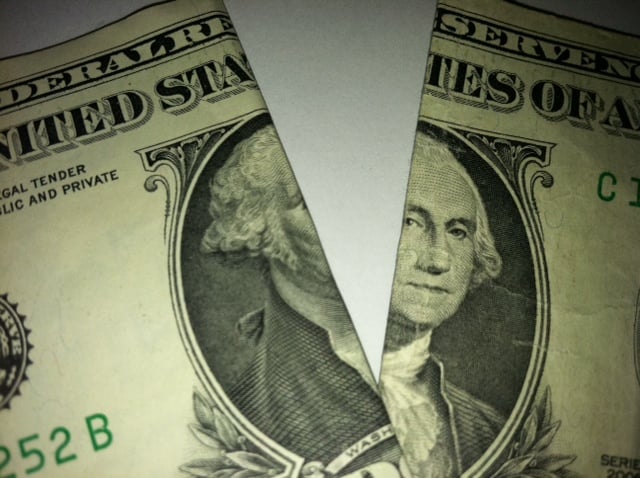Investing
Census Data: Poverty Rates, Median Income Drops Get Worse & Worse
Published:
Last Updated:

The Census Bureau is out with the 2010 figures on income, poverty, and health insurance. About all you can hope for is that 2011 is magically better than 2010 because many of the figures are literally eye-popping. We have higher poverty rates, lower median income, higher uninsured rates, greater racial inequality, and even more young adults depending upon mom and dad than most of us have ever seen.
24/7 Wall St. has gone through the figures released by the Census Bureau today and removed much of the noise to focus on the larger issues that affect most of America. That also means that much of the data affecting smaller groups or measuring other metrics was eliminated. When you consider the direction of the current economic data compared to earlier this year and the risks of another recession growing more and more, it is alarming.
Median household money income for the nation fell 2.3% to $49,400 in 2010 in real terms, the lowest reading back to $49,112 in 1996 and down from a peak of $53,252 in 1999 and down from a more recent peak of $52,823 in 2007. The 2010 official poverty rate for the nation was 15.1% in 2010 versus 14.3% in 2009: 46.2 million people in poverty, up 2.6 million since 2009. The drop in real income the year after a recession was the worst in percentage terms going back to at least the 1960s.
Apparently there is an age-bias on the drop of income as well. If you fell into the age bracket of 15 to 24, the average income was down a whopping 9.3%. There was a 1.9% drop in household income for those 25 to 34 years old and there was no significant change in the age group of 35 to 44 years old. Then came the second largest drop of 4.3% in those aged 45 to 54, yet there was no significant drop in the 55 to 64 and the 65 and older brackets.
Women now earn about 77% as much as men and that appears to have been one of the best ratios going back 50 years. The rate of households with children is also atrocious. Married-couple families are at 8.8%, but single-mother households ticked back up again to a decade-plus high of 40.7%.
By race, the poverty rate appears to have ticked up for all but Asians. Black was 27.4% in poverty, Hispanic was 26.6% in poverty, Asian was 12.1%, and white was 9.9%. Age is the worst feature of all… 22% of those under 18 years old now live in poverty.
The doubling-up, those households with children above 18 years old rose substantially as well. This measure was from 2007 to 2011. There was a 25.5% gain in those of age 25 to 34 living with their parents, and the total number was up 10.7%. The doubled-up households grew to 21.8 million in 2011 from 19.7 million in 2007. The number of young adults aged 25 to 34 who live with their parents grew from 4.7 million in 2007 to 5.9 million in 2011.
Real median household income was down to $49,400 to the lowest reading in more than a decade and the poverty rate was back at a cycle peak of 15.1%. The number of those in poverty was a real high (with population growth) of 46.2 million in 2010.
People without health insurance coverage in 2010 was basically the same as 2009 at 16.3%, but the number of uninsured rose to 49.9 million in 2010 versus 2009’s reading of 49.0 million. Of all people in America without health insurance, the reading rose to 16.3%, but the rate of children without health insurance was 9.8%. Government coverage rates continued to rise and those with employment-based coverage fell to 55.3% and those with any form of private coverage was 64.0%. Those two compared to 62.1% and 75.5%, respectively, in the late 1980’s.
If you go back to 1999, the 2010 uninsured rates by race were the highest at 30.7% for Hispanic but that is under the 31.9% in 1999 and under the peak of close to 33% in 2006. Uninsured rates were the highest in 2010 since 1999 for Whites (at 11.7%), Asians (at 18.1%), and Black (at 20.8%).
The uninsured rates were as you would expect, the higher the income the lower the uninsured rates are:
The full PDF is here.
In all seriousness, is the American Dream alive and well?
JON C. OGG
Warren Buffett loves dividend stocks, and has stuffed Berkshire with some of his favorites.
But he overlooked two dividend legends that continue to print checks on a new level, they’re nowhere in his portfolio.
Unlock the two dividend legends Buffett missed in this new free report.
Thank you for reading! Have some feedback for us?
Contact the 24/7 Wall St. editorial team.